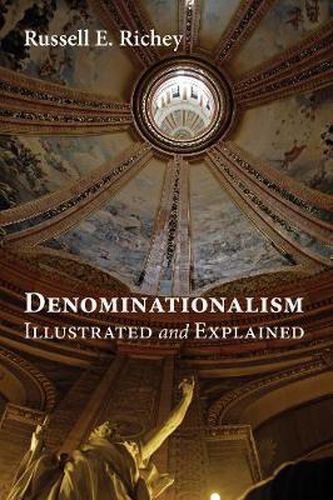Readings Newsletter
Become a Readings Member to make your shopping experience even easier.
Sign in or sign up for free!
You’re not far away from qualifying for FREE standard shipping within Australia
You’ve qualified for FREE standard shipping within Australia
The cart is loading…






This title is printed to order. This book may have been self-published. If so, we cannot guarantee the quality of the content. In the main most books will have gone through the editing process however some may not. We therefore suggest that you be aware of this before ordering this book. If in doubt check either the author or publisher’s details as we are unable to accept any returns unless they are faulty. Please contact us if you have any questions.
Evidence of mainstream denominational decline virtually throws itself in our faces–growing religious pluralism in North America; the decline over the last half century in the salience, prestige, power, and vitality of Protestant denominational leadership; slippage in mainline membership and corresponding growth, vigor, visibility, and political prowess of conservative, evangelical, and fundamentalist bodies; patterns of congregational independence, including loosening of or removal of denominational identity, particularly in signage, and the related marginal loyalty of members; emergence of megachurches, with resources and the capacity to meet needs heretofore supplied by denominations (training, literature, expertise); growth within mainline denominations of caucuses and their alignment into broad progressive or conservative camps, often with connections to similar camps in other denominations; widespread suspicion of, indeed hostility towards, the centers and symbols of denominational identity–the regional and national headquarters; migration of individuals and families through various religious identities, sometimes out of classic Christianity altogether. Denominationalism looks doomed and is so proclaimed. It may be. However, viewing the sweep of Anglo-American history, this volume suggests how much denominations and denominationalism have changed, how resilient they have proved, how significant these structures of religious belonging have been in providing order and direction to American society, and how such enduring purposes find ever new structural/institutional expression.
$9.00 standard shipping within Australia
FREE standard shipping within Australia for orders over $100.00
Express & International shipping calculated at checkout
This title is printed to order. This book may have been self-published. If so, we cannot guarantee the quality of the content. In the main most books will have gone through the editing process however some may not. We therefore suggest that you be aware of this before ordering this book. If in doubt check either the author or publisher’s details as we are unable to accept any returns unless they are faulty. Please contact us if you have any questions.
Evidence of mainstream denominational decline virtually throws itself in our faces–growing religious pluralism in North America; the decline over the last half century in the salience, prestige, power, and vitality of Protestant denominational leadership; slippage in mainline membership and corresponding growth, vigor, visibility, and political prowess of conservative, evangelical, and fundamentalist bodies; patterns of congregational independence, including loosening of or removal of denominational identity, particularly in signage, and the related marginal loyalty of members; emergence of megachurches, with resources and the capacity to meet needs heretofore supplied by denominations (training, literature, expertise); growth within mainline denominations of caucuses and their alignment into broad progressive or conservative camps, often with connections to similar camps in other denominations; widespread suspicion of, indeed hostility towards, the centers and symbols of denominational identity–the regional and national headquarters; migration of individuals and families through various religious identities, sometimes out of classic Christianity altogether. Denominationalism looks doomed and is so proclaimed. It may be. However, viewing the sweep of Anglo-American history, this volume suggests how much denominations and denominationalism have changed, how resilient they have proved, how significant these structures of religious belonging have been in providing order and direction to American society, and how such enduring purposes find ever new structural/institutional expression.